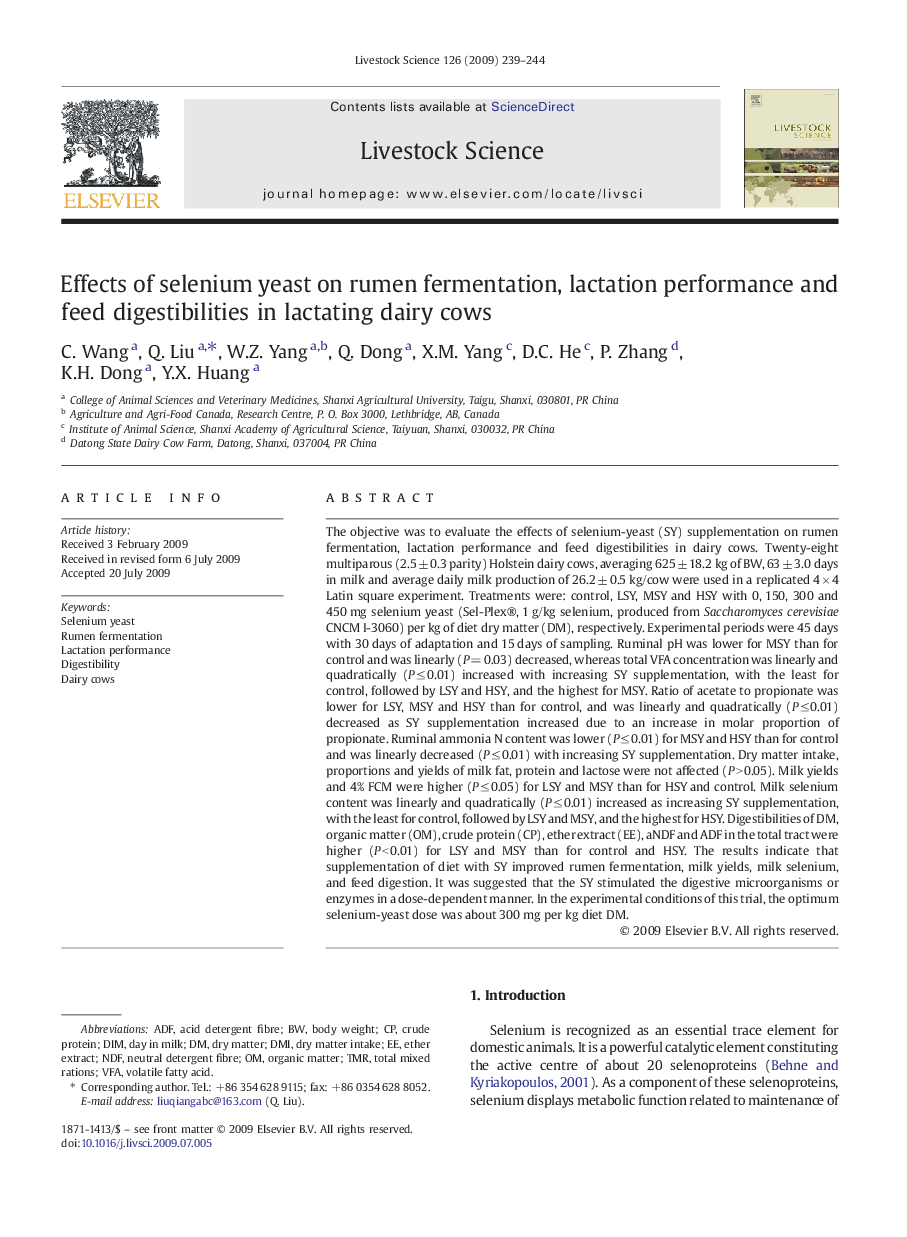| Article ID | Journal | Published Year | Pages | File Type |
|---|---|---|---|---|
| 2447944 | Livestock Science | 2009 | 6 Pages |
The objective was to evaluate the effects of selenium-yeast (SY) supplementation on rumen fermentation, lactation performance and feed digestibilities in dairy cows. Twenty-eight multiparous (2.5 ± 0.3 parity) Holstein dairy cows, averaging 625 ± 18.2 kg of BW, 63 ± 3.0 days in milk and average daily milk production of 26.2 ± 0.5 kg/cow were used in a replicated 4 × 4 Latin square experiment. Treatments were: control, LSY, MSY and HSY with 0, 150, 300 and 450 mg selenium yeast (Sel-Plex®, 1 g/kg selenium, produced from Saccharomyces cerevisiae CNCM I-3060) per kg of diet dry matter (DM), respectively. Experimental periods were 45 days with 30 days of adaptation and 15 days of sampling. Ruminal pH was lower for MSY than for control and was linearly (P = 0.03) decreased, whereas total VFA concentration was linearly and quadratically (P ≤ 0.01) increased with increasing SY supplementation, with the least for control, followed by LSY and HSY, and the highest for MSY. Ratio of acetate to propionate was lower for LSY, MSY and HSY than for control, and was linearly and quadratically (P ≤ 0.01) decreased as SY supplementation increased due to an increase in molar proportion of propionate. Ruminal ammonia N content was lower (P ≤ 0.01) for MSY and HSY than for control and was linearly decreased (P ≤ 0.01) with increasing SY supplementation. Dry matter intake, proportions and yields of milk fat, protein and lactose were not affected (P > 0.05). Milk yields and 4% FCM were higher (P ≤ 0.05) for LSY and MSY than for HSY and control. Milk selenium content was linearly and quadratically (P ≤ 0.01) increased as increasing SY supplementation, with the least for control, followed by LSY and MSY, and the highest for HSY. Digestibilities of DM, organic matter (OM), crude protein (CP), ether extract (EE), aNDF and ADF in the total tract were higher (P < 0.01) for LSY and MSY than for control and HSY. The results indicate that supplementation of diet with SY improved rumen fermentation, milk yields, milk selenium, and feed digestion. It was suggested that the SY stimulated the digestive microorganisms or enzymes in a dose-dependent manner. In the experimental conditions of this trial, the optimum selenium-yeast dose was about 300 mg per kg diet DM.
